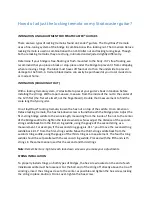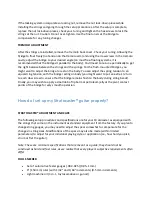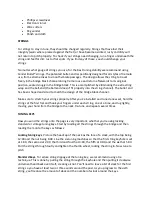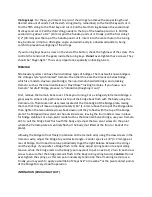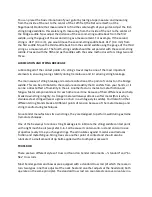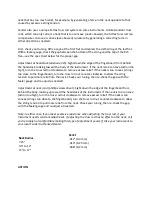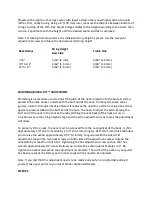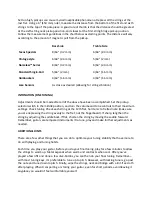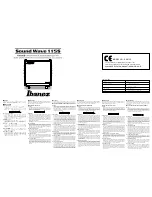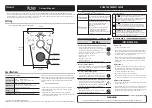
Set too high, pickups can cause myriad inexplicable phenomena. Depress all the strings at the
last fret. Using a 6" (150 mm) ruler, measure the distance from the bottom of the first and sixth
strings to the top of the pole piece. A good rule of thumb is that the distance should be greatest
at the sixth-string neck pickup position, and closest at the first-string bridge pickup position.
Follow the measurement guidelines in the chart below as starting points. The distance will vary
according to the amount of magnetic pull from the pickup.
Bass Side
Treble Side
Texas Specials
8/64" (3.2 mm)
6/64" (2.4 mm)
Vintage style
6/64" (2.4 mm)
5/64" (2 mm)
Noiseless™ Series
8/64" (3.2 mm)
6/64" (2.4 mm)
Standard Single-Coil
5/64" (2 mm)
4/64" (1.6 mm)
Humbuckers
4/64" (1.6 mm)
4/64" (1.6 mm)
Lace Sensors
As close as desired (allowing for string vibration)
INTONATION (FINE TUNING)
Adjustments should be made after all of the above have been accomplished. Set the pickup
selector switch in the middle position, and turn the volume and tone controls to their maximum
settings. Check tuning. Check each string at the 12th fret, harmonic to fretted note (make sure
you are depressing the string evenly to the fret, not the fingerboard). If sharp, lengthen the
string by adjusting the saddle back. If flat, shorten the string by moving the saddle forward.
Remember, guitars are tempered instruments! Re-tune, play and make further adjustments as
needed.
ADDITIONAL HINTS
There are a few other things that you can do to optimize your tuning stability that have more to
do with playing and tuning habits.
Each time you play your guitar, before you do your final tuning, play for a few minutes to allow
the strings to warm up. Metal expands when warm and contracts when cool. After you've
played a few riffs and done a few dive-bombs, you can then do your final tuning. Remember—
with most tuning keys, it's preferable to tune up to pitch. However, with locking tuners, go past
the note and tune down to pitch. Finally, wipe the strings, neck and bridge with a lint-free cloth
after playing. When transporting or storing your guitar, even for short periods, avoid leaving it
anyplace you wouldn't feel comfortable yourself.

